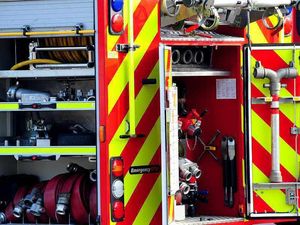COD Donnington blaze: Payout for family after toxic depot fire death
A family whose mother died of cancer caused by asbestos exposure following a toxic fire in Shropshire have been awarded a ‘substantial’ payout.

Susan Maughan inhaled the toxic dust following the blaze at army depot COD Donnington in 1983, which scattered ash containing asbestos for 15 square miles around Telford.
It was three days before the council began its clean-up operation, by which time many residents had already done so themselves.
Mrs Maughan’s exposure was enough to cause mesothelioma – an aggressive and incurable cancer, typically found in the lungs, which can lie dormant for decades before symptoms appear.
Now her family has been given a compensation pay out by the Ministry of Defence. It is the latest payment given to families of those who have died from illness directly linked to the fire.
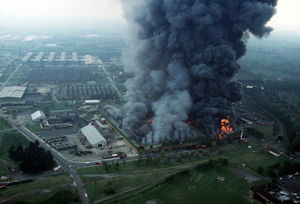
Mrs Maughan, a mother-of-four who also had eight grandchildren and one great-grandchild, died in 2015 aged 63, three years after her diagnosis.
Now, following legal action, the MoD, which owned the army base, has reached a ‘substantial’ out-of-court settlementy.
But daughters Sonia, Cath and Lorraine, who rallied round to care for their mother when she fell ill, fear they too could be living with the same death sentence.
Lorraine, 47, who was just 11 at the time, said: “Sadly I don’t think mum will be the last victim.
My sisters and I now also worry for our health as we played with the dust and debris, which looked like snow, as did many other children.
"We discussed legal action when mum was alive and I’m glad we’ve been able to get justice for her, but it doesn’t undo what’s happened.
“You never know what’s round the corner, but it’s hard when someone gets taken away because of a substance that shouldn’t have been used in the first place and in such a devastating way.”
The day death rained from the skies
Death fell from the skies on June 24, 1983.
As fire engulfed the army depot at COD Donnington, flakes of ash covered an area that is believed to have spread over 15 square miles.
Children played in it and people set about clearing the mess from their paths and gardens.
Only now, decades later, are the deadly effects of that day being shown.
The ash contained asbestos, which when stable is safe but when disturbed and sent into the atmosphere can cause terrible harm.
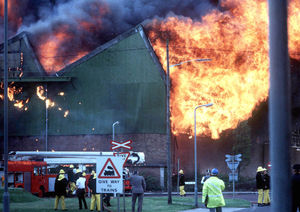
Susan Maughan was house proud. When no council workmen came to clean up the area around her home, she set about it herself.
In the process she inhaled the toxic dust and sowed the seed of mesothelioma – an aggressive and incurable cancer, typically found in the lungs, which can lie dormant for decades before symptoms appear.
Mrs Maughan isn’t the first to die in recent years as a result of the fire. Paula Ann Nunn died from the same lung disease. Marion Groves lived for just four months after being diagnosed with mesothelioma.
Mrs Maughan’s family have now received a substantial compensation package from the Ministry of Defence.
The payments was today welcomed by daughters Sonia, Cath and Lorraine, although they say it will not bring their mother back.
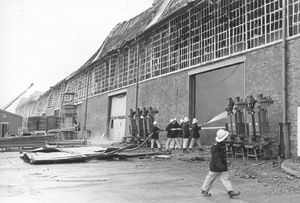
Lorraine said: “Mum was a fighter, but there was nothing the doctors could do. She was on oxygen all the time and wouldn’t leave the house. We just watched her get weaker and weaker.”
Reports from the time show ash containing asbestos was blown across a 15-square mile area following the fire, although at first there were no warnings that the dust was dangerous and it was not cleaned up for days.
Dr Philip Moore, the district medical officer with Shropshire Health Authority in 1983, declared at the time: “The risk to health is practically non-existent to ordinary members of the public. The chances of anything happening to them are very remote and extreme. The type of asbestos involved is also not the most dangerous one.”
The area affected by the clean-up extended westwards from COD Donnington and included Hadley, Leegomery, and Wellington. The bill ran to at least £165 million. A top level Board of Inquiry failed to find out the cause.
Arson was suspected but nothing concrete was found.
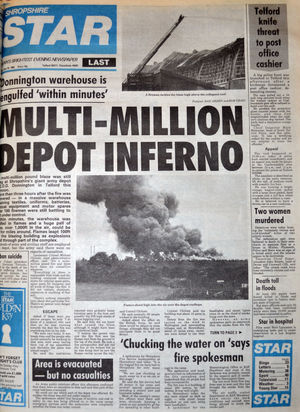
Susan, who also had a son Allan, was living in Winsford, Cheshire, at the time of her death.
Over the years she held various jobs including as a cleaner and a hairdresser, but an inquest into her death ruled she had ‘almost certainly’ been exposed to asbestos in the aftermath of the warehouse blaze.
Madelene Holdsworth, head of the industrial disease department at law firm Slater and Gordon, represented the family and is also handling several other cases connected to the fire. She added: “By 1983 the dangers were known and while the fire itself was not intentional, what we do know is that the Ministry of Defence had been warned about the lack of fire protection measures and that the building itself was a fire hazard.
“On behalf of the family, I would like to thank the many people who lived in the area at that time and came forward after reading Susan’s story to share their memories with us. Nothing will bring her back, but I am pleased that we have at least been able to give her family the answers as to why her life was so tragically and cruelly cut short.”
Asbestos came down with fire debris
By Toby Neal
As the dust settled in the wake of the huge COD Donnington fire of 1983, something came down with it – asbestos.
The airborne debris was carried for miles, but people were led to believe it was harmless. There was nothing toxic in the building, the Army said. No cause for alarm.
Curious folk picked the debris up and had a look. It was scattered all over the place, over 15 square miles.
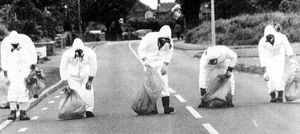
The blaze was on Friday, June 24. The weekend passed. Then late on the Monday a message was sent by the pollution control officer of Wrekin Council to county education chiefs. It said preliminary tests had shown “small quantities” of asbestos in the fire debris.
By this time many residents had already cleared up the debris which had fallen in their gardens and in streets.
Still, there were calming voices, even though nearly 4,000 schoolchildren at 11 schools, all in the Wellington area which had been in the path of the smoke cloud, were kept indoors while further tests were carried out. Purely a precautionary measure, they said.
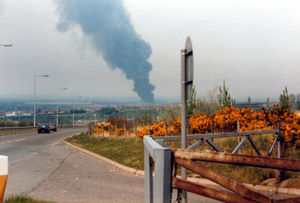
Fire chiefs meanwhile said that preliminary investigations indicated that there was no significant amount of asbestos in the building which had been destroyed - Building B6, a giant warehouse which stored textiles and technical equipment. The Army said the same.
Then, suddenly, the balloon went up. Contrary to all those soothing noises, it was found that the fallout did indeed contain asbestos – both brown and white asbestos – and a huge swathe had been contaminated.
The asbestos came from the roof of the blitzed warehouse. It was corrugated metal, but had been treated with a mixture of zinc and bitumen which was held together with a binding material which contained asbestos.
On June 29 council chiefs held a top level meeting. And the council launched Operation Asbestos – a massive clear-up operation which saw council workers in protective suits take to the streets.
Public parks were closed, dry road sweeping and grass cutting were halted, schoolchildren were kept indoors, and there was advice that children and animals should be kept away from gardens and play areas.
Residents were told what to do if their garden was affected by debris. Residents were advised to sprinkle it with water using a watering can, pick up the pieces wearing gloves, and put the debris in green sacks.




